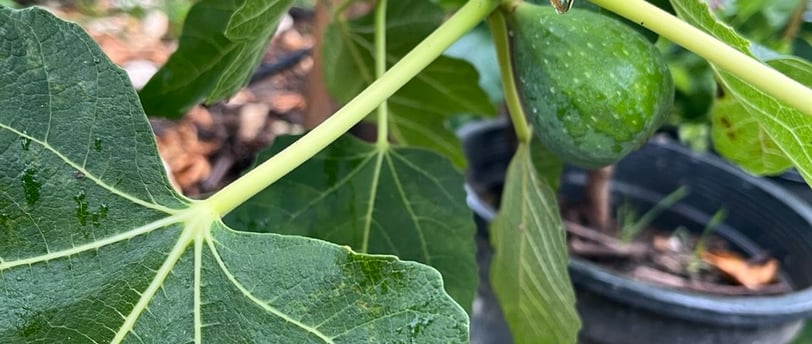Best Frugal Gardener
The Honest Truth About Growing Your Own Food: A 30-Something's First Year of Urban Gardening
11/23/20243 min read


Look, I was skeptical too. Every time I saw those TikToks about "growing infinite vegetables on your patio," I rolled my eyes so hard I probably burned calories. But after a year of actual urban gardening, I've got some real numbers to share about what's worth growing and what's just Instagram gardening fantasy.
## The Initial Investment: Let's Talk Real Numbers
Here's what I actually spent to get started:
- Raised bed materials (2 beds): $120
- Quality soil and compost: $180
- Basic tools: $75
- Seeds and starter plants: $65
- Irrigation setup: $45
- Total startup: $485
Pro tip: I could have cut this by $200 if I'd started in fall/winter when supplies were cheaper and built beds from salvaged materials.
## What Actually Grew (And What Actually Saved Money)
### The Winners (Actually Worth Growing)
1. Cherry Tomatoes
- Cost to grow: $15 (plants + supports)
- Yield: 30 lbs over 4 months
- Store equivalent: $180
- Net savings: $165
- Time investment: 20 minutes/week
2. Leafy Greens (Kale, Swiss Chard)
- Cost to grow: $8 (seeds)
- Yield: Fresh greens 3x/week for 6 months
- Store equivalent: $240
- Net savings: $232
- Time investment: 10 minutes/week
3. Fresh Herbs
- Cost to grow: $20 (plants)
- Yield: Year-round herbs
- Store equivalent: $300+ (those $3 packs add up)
- Net savings: $280
- Time investment: 5 minutes/week
4. Bell Peppers
- Cost to grow: $12 (plants)
- Yield: 25 peppers over 3 months
- Store equivalent: $75
- Net savings: $63
- Time investment: 15 minutes/week
### The Losers (Just Buy These)
1. Carrots
- Cost to grow: $5
- Yield: 20 sad, twisted carrots
- Store equivalent: $8
- Net loss: Time and dignity
2. Corn
- Cost to grow: $10
- Yield: 12 mediocre ears
- Store equivalent: $10
- Not worth the space
## The Real Talk About Time Investment
Weekly Maintenance:
- Watering (with automation): 10 minutes
- Weeding: 20 minutes
- Harvesting: 15 minutes
- Plant maintenance: 20 minutes
- Total: About 1 hour/week
Seasonal Tasks:
- Spring setup: 6 hours
- Fall cleanup: 4 hours
- Winter planning: 2 hours
## The Space Reality Check
What I could grow in a 4x8 raised bed:
- 4 tomato plants
- 8 pepper plants
- Continuous lettuce/greens patch
- Herb section
- Seasonal rotating crop section
## Money-Saving Hacks That Actually Worked
1. The Seed Starting Game
- Built DIY grow light setup: $40
- Seeds vs. buying plants savings: $200/year
- Success rate: 70% (getting better)
2. Water Management
- Rain barrel setup: $85
- Annual water savings: $40
- Automated watering time savings: 2 hours/week
3. Composting
- DIY bin cost: $30
- Annual soil savings: $120
- Reduced garbage output: 30%
## Season Extension Tactics
Low-cost ways I extended the growing season:
- Row covers: $25
- Cold frames (DIY): $40
- Result: Added 2 months to growing season
- Extra yield value: $150
## What I Wish I'd Known Year One
1. Start Small
- Begin with herbs and greens
- Master the basics before expanding
- Don't try to grow everything
2. Focus on High-Value Crops
- Fresh herbs
- Cherry tomatoes
- Leafy greens
- Bell peppers
3. Automate Everything Possible
- Irrigation systems are worth it
- Timer-based watering saves plants
- Less daily maintenance = more success
## The Real ROI Breakdown
Year One:
- Total Investment: $485
- Total Yield Value: $895
- Net Savings: $410
- Time Investment: ~100 hours
- "Hourly Rate": $4.10 (ouch)
Projected Year Two:
- New Investment Needed: $100
- Expected Yield Value: $1,000
- Net Savings: $900
- Time Investment: ~80 hours
- "Hourly Rate": $11.25 (better)
## When Growing Your Own Actually Makes Sense
You should consider growing food if:
- You have 4+ hours/week to spare
- You enjoy being outside
- You spend a lot on fresh herbs
- You're tired of paying $5 for sad supermarket tomatoes
- You have reliable sunlight
Don't bother if:
- You travel frequently
- You can't commit to regular maintenance
- You expect immediate savings
- You have heavy shade
## Unexpected Benefits
1. Mental Health
- Stress reduction
- Morning coffee in the garden
- Actual mindfulness practice
2. Physical Health
- Better quality produce
- More likely to eat vegetables
- Light exercise
3. Social Benefits
- Garden produce as gifts
- Community connections
- Instagram content that isn't brunch
## The Bottom Line
Growing your own food isn't a get-rich-quick scheme. Year one is basically paying for a hobby that gives you vegetables. But by year two, if you're smart about what you grow and how you grow it, you can actually see significant savings – especially on high-value items like herbs and specialty vegetables.
Just remember: start small, automate what you can, and accept that your first carrots will look like something from Chernobyl. That's just part of the journey.
P.S. Yes, homegrown tomatoes really do taste better. No, I can't explain why. Some things science just can't quantify.
